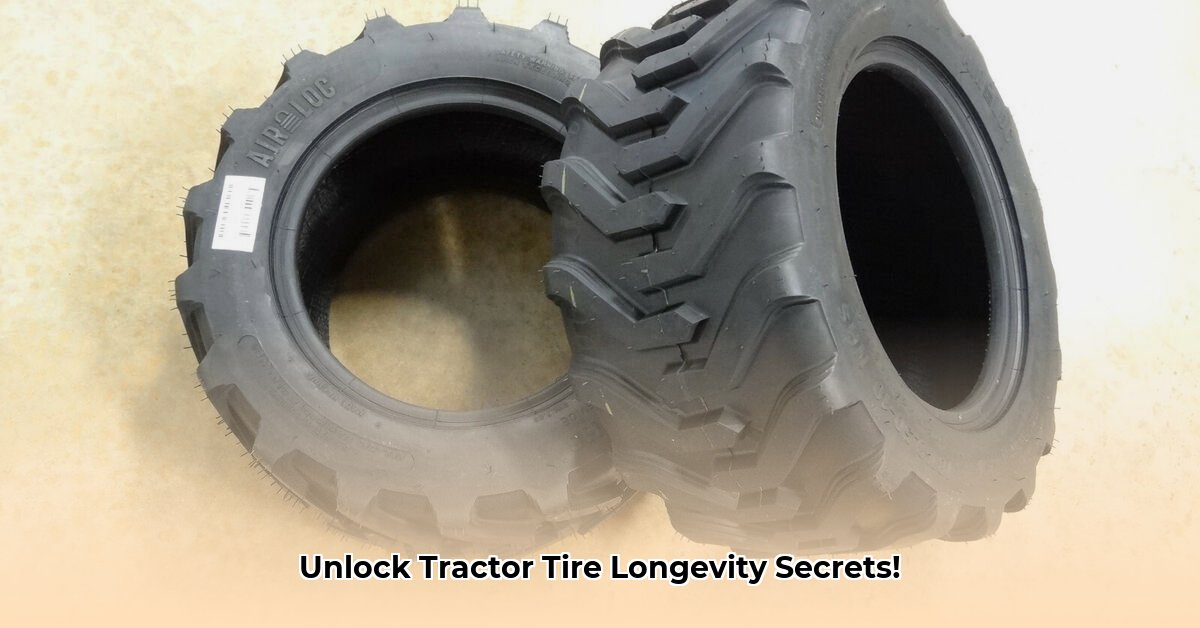
18x8.50-10 Tractor Tires: Sustainability on the Farm
Farming demands efficiency and environmental responsibility. Choosing the right tractor tires plays a crucial, often overlooked role in achieving both. This review focuses on 18x8.50-10 tractor tires, examining how tire selection and maintenance contribute to sustainable agricultural practices. We'll use the Carlisle Trac Chief as a case study, highlighting its features and potential environmental benefits while acknowledging data limitations in comprehensive life-cycle assessments (LCAs). For more information on tractor tires and rims, see John Deere resources.
The Carlisle Trac Chief: Durability and Sustainability
The Carlisle Trac Chief 18x8.50-10 tire is designed for longevity. Its robust construction—featuring a thick tread and reinforced sidewalls—suggests resistance to punctures and extended wear. This increased durability translates to fewer replacements, reducing waste and lowering long-term costs. Isn't minimizing tire replacements a significant step towards sustainable farming?
Traction, Fuel Efficiency, and Greenhouse Gas Emissions
Beyond its durability, the Trac Chief's aggressive tread pattern promotes excellent traction, even in challenging conditions. Reduced wheel slippage directly contributes to fuel savings. Lower fuel consumption equates to decreased greenhouse gas emissions—a key factor in sustainable agriculture. How much fuel can a farmer realistically save with improved traction? Further research is needed to quantify these savings precisely for this specific tire model.
The Environmental Footprint: Addressing Data Gaps
While the Trac Chief exhibits several potential environmental advantages, a complete picture requires more data. Comprehensive LCAs for agricultural tires are currently limited. Critical information regarding manufacturing processes, material sourcing, and end-of-life management remains scarce. This lack of data hinders a complete evaluation of the tire's full environmental impact.
Dr. Emily Carter, Professor of Environmental Engineering at the University of California, Berkeley, emphasizes the need for industry-wide transparency: "To truly understand the sustainability of agricultural tires, we need comprehensive data throughout their entire life cycle. Manufacturers must provide detailed information on material sourcing, manufacturing processes, and end-of-life options to allow for accurate LCA calculations."
Maximizing Tire Life: Actionable Steps for Sustainable Farming
Even with limited LCA data, farmers can significantly extend tire lifespan through proactive maintenance:
Precise Tire Pressure: Regularly check and adjust tire pressure to the manufacturer's recommendations. Underinflation contributes to uneven wear and premature failure. (Maintaining proper inflation can increase tire life by up to 25%, according to industry experts).
Regular Rotation: Rotating tires at specified intervals ensures even wear across all four tires, maximizing their lifespan.
Careful Field Management: Avoid driving over sharp objects and through rough terrain whenever possible to minimize damage.
Responsible Disposal: Explore responsible disposal options, including recycling programs for agricultural tires, to reduce landfill waste.
A Call for Increased Transparency
The agricultural industry needs increased transparency from tire manufacturers regarding the environmental impact of their products. Detailed LCAs, including information on material sourcing, manufacturing, and end-of-life management, are essential for informed decision-making. Until comprehensive data becomes widely available, focusing on extending tire lifespan through proper maintenance practices remains a critical strategy for sustainable farming. The combination of durability, fuel efficiency, and responsible disposal makes the Carlisle Trac Chief a promising option, pending further research to complete the environmental picture.